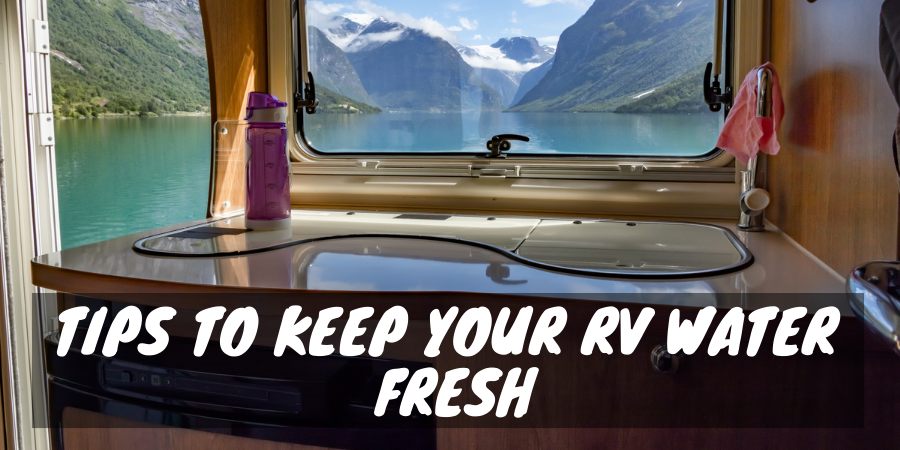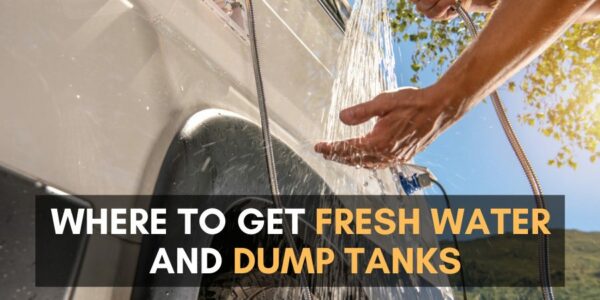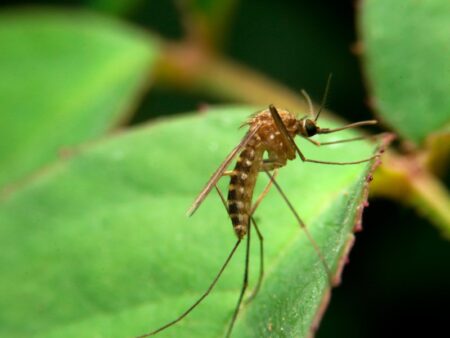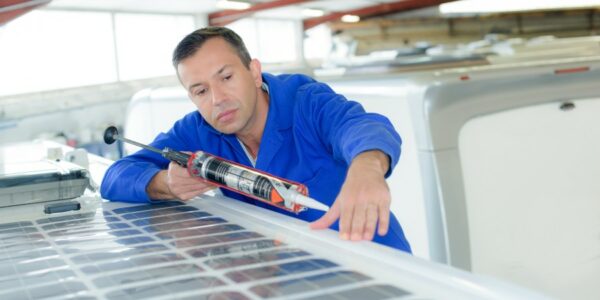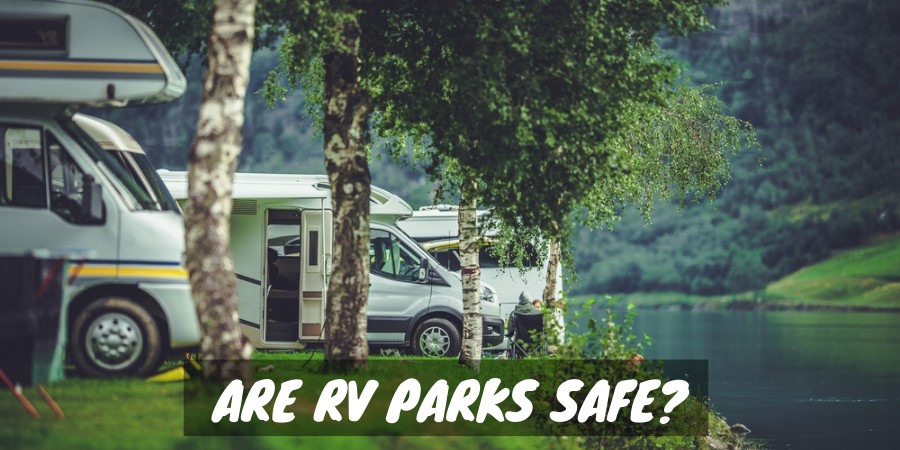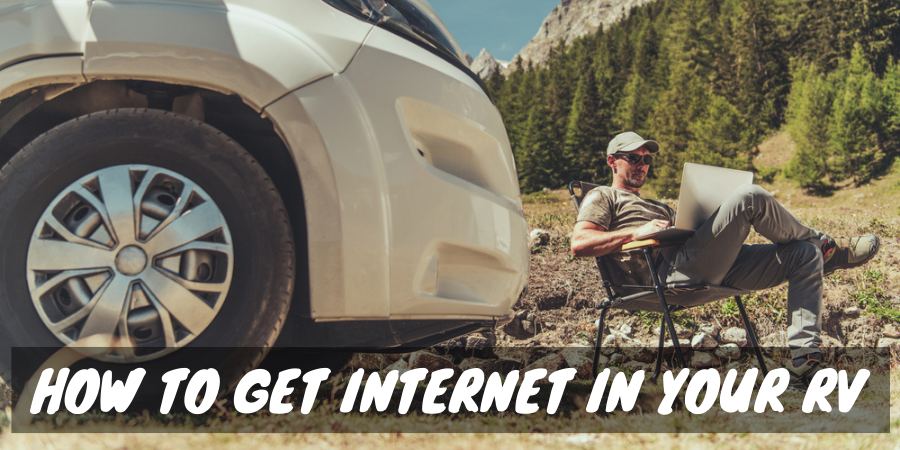Ever wonder how long the water inside your RV’s water tank remains fresh and safe to use?
The answer comes down to many factors, such as the quality of the fill water, the techniques you use to fill the tank, how much water you use daily, and what filters or additives you use.
No one wants stinky or germy water coming from their RV tap, so learn all the tricks to keep your RV water fresh as long as possible by following the tips in this guide!
What Is an RV Water Tank?
Nearly all motorhomes, travel trailers, and fifth wheels come with a freshwater tank inside the RV. The tank is usually sitting in a hidden compartment, and it can hold anywhere from 20 to 100 gallons of water.
The holding tank allows you to pump water to your kitchen and bathroom fixtures without the need to connect to a city water tap so that you can camp anywhere.
In order to keep RV water fresh, you need to keep these components clean and sanitized:
- Freshwater tank
- Filler hose
- Internal RV plumbing lines
While many RVers know how to clear out antifreeze solutions and sanitize their freshwater tank to prepare for the camping season, many don’t know what they need to do during camping trips to maintain a safe water supply.
It takes only a bit of bacteria to enter your RV water tank or lines to create a dangerous situation. Most people camp during nice weather, which means the water inside your holding tank will also be warm and can quickly become a bacterial breeding ground.
To prevent stomach discomfort or diarrhea resulting from drinking contaminated water during activities like dishwashing or teeth brushing, it’s important to adhere to the following advice to maintain the freshness of your RV’s water supply.
How to Keep RV Water Fresh
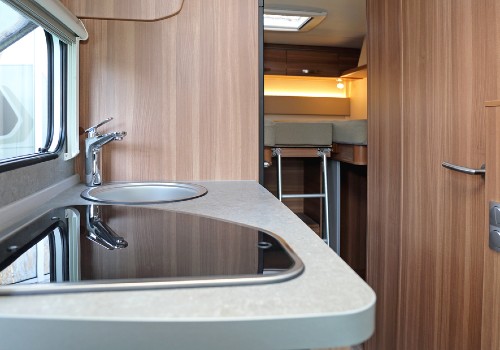
1. Regularly Sanitize the RV Fresh Water Tank and Plumbing Lines
Would you drink from an open gallon of water that is three weeks old? Unless it was a life-and-death situation, I think you’d pass.
Many RVers clean their freshwater holding tank and flush the pipes at the start of the season, and that’s it.
Letting any amount of water sit inside a container for any length of time will lead to odors, bacterial growth, and even slimy algae-like molds.
Air does get into the tank as the water drains during use, leaving open the possibility of germs taking over.
When you take the time to sanitize both the RV water tank and plumbing lines by cleaning and flushing the system with a bleach solution every three months or so, you lay the groundwork for keeping RV water much fresher.
Here’s a quick recap on how to sanitize your RV water tank:
- Drain the water tank (turn off the water heater)
- Dilute 1 cup of bleach per every 10-gallon tank capacity with water in a bucket
- Pour the bleach mixture into the holding tank
- Top off the water in the tank
- Pump water through the plumbing system
- Let bleach solution sit 12-24 hours
- Drain the tank and refill it with water
- Flush plumbing lines until the bleach smell dissipates
2. Only Fill the Tank Using a Drinking Water Hose
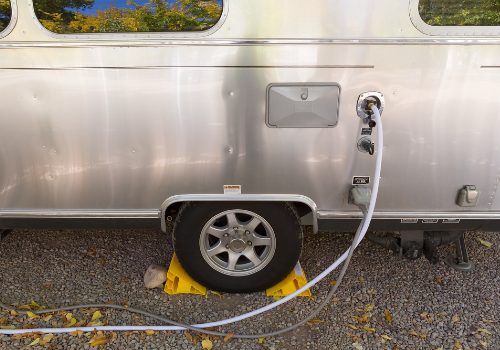
Never use anything but a drinking water hose to fill your RV water tank.
A regular garden hose can harbor germs or pass along debris or chemicals from the rubber or material that make the water taste bad.
Sanitize your filler hose every time you clean and flush your tank and plumbing lines to ensure freshness.
3. Try to Fill the RV Water Tank with City Water
City water is treated and chlorinated, making it safe for human consumption.
Municipal water treatment will help prolong the water’s safe quality in the RV tank longer than untreated well water.
Chlorine is basically bleach. According to this FDA chart using bleach for water purification, if you do need to fill up with well water, you can add a small amount of bleach with each refill and still safely drink the water.
Never go overboard when adding bleach to your RV water tank and plumbing system. Too much bleach will cause corrosion of any metal components, and high levels are unsafe to drink.
WARNING: Use bleach with sodium hypochlorite as the only active ingredient. Be aware that some brands have a concentrate of 5.25% sodium hypochlorite, while others are 8.25%, so you’ll need to adjust how much you add.
For example, you’ll need to add 3/4 teaspoon per 10 gallons of water at the 5.25% concentration but only 1/2 teaspoon per 10 gallons at the 8.25% concentration.
As most RVers without water filters avoid drinking or cooking with water from their holding tank anyway, the issue of adding a bit of bleach into the water supply is a non-issue.
Other RVers swear by using water purification tablets when filling the water tank from a well to be on the safe side. The tablets don’t alter the water taste, but if your tank is large, you may need to add quite a few to treat it fully.
4. Install an RV Water Filtration System
Most RVers add an inline water filter outside the camper to remove large particulates and reduce bad tastes when hooking up to campground water supplies.
Many newer models of recreational vehicles offer a permanent water filtration system as a standard feature. This system will treat water from either the holding tank or the RV park spigot, so you’ll always have fresh water for drinking, washing, or cooking.
If you lack a filtering system, there are several excellent RV water filtration kits on the market that are affordable and straightforward enough for a DIY installation.
You will have to pay for and store filter cartridge replacements in your RV and monitor their condition, but it’s a small price to pay for clean water while camping.
RV Ultra Water Filter: Unboxing and Complete Install (Video)
RV Water Tank FAQs
Can You Drink Water From the RV Freshwater Tank?
Yes, you can drink water from your RV fresh water tank if you keep the tank and plumbing lines clean and only fill the reservoir with potable water through a clean drinking water hose.
Many RVers find the taste of water from the holding tank to be unpleasant and either add in a water filtration system at the kitchen sink for drinking or stick to bottled water.
How Long Can You Keep Water in a Freshwater RV Tank?
You can leave water in a freshwater RV tank for years if you want, but that doesn’t mean you’ll feel comfortable using it for anything other than flushing the toilet.
The consensus among long-time RVers is that you should drain and replace any old water in your camper’s holding tank after two to four weeks to maintain freshness.
After this time, most find that the water takes on a strange odor or taste, often from the tank’s plastic-leaching chemicals and not necessarily from bacteria growth.
People who have high-quality water filters in their recreational vehicles for the sinks or showers find that they never need to worry about replacing water in the tank.
These campers keep topping off the freshwater supply as necessary and change out filters when they notice a difference in the taste or odor of the water or when the filter is dirty.
Should You Travel With Water in Your RV?
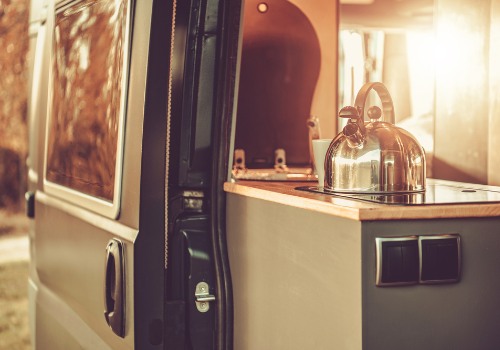
It would be best if you only traveled with enough water in your RV to reach your destination.
The amount of water you require depends on how often you plan to flush the toilet or run the faucets while on the road.
Those driving a motorhome have continual access to the facilities, so you’ll most likely need more water than someone towing a trailer that can only use the bathroom or kitchen during rest stops.
Filling your RV fresh water tank one-quarter or one-third full during transit is typically sufficient.
It’s not wise to fill the water tank all the way, as it adds more weight to your camper and increases your fuel expense.
The best option is to forgo any water at all in your holding tank to save on gas. Instead, you can fill up your water tank at or near your camping destination so the water is as fresh as possible.
How Long Will a 40-Gallon RV Water Tank Last?
A 40-gallon RV water tank may last only a few days or as long as two weeks, depending on usage.
Two people taking showers, using the toilet, and washing dishes daily will drain the tank fast. If you ration shower time and are careful with water use, you can stretch the tank much further.
The point is to learn what works best for you. Camping won’t be enjoyable if you need to monitor your water usage continually.
For people who love to dry camp, learning how long your RV’s water tank will last is helpful in planning trips where access to a water-fill station is limited.
There are several ways you can figure out how long a 40-gallon or other-size RV water tank will last.
PERFORM A TEST RUN
Want to Connect With a Community of Over 1,078 RV Enthusiasts?
An excellent way to determine how long your water tank will last is to unhook from city water during a couple of camping trips and only use your pump and holding tank.
Continue to camp and use water as usual. Monitor the tank level each day while also making notes of any large water drains, such as taking a shower.
If your tank is only half-empty after three days of camping, you can assume your tank will last about six days.
CHECK DAILY USAGE WITH A FLOW METER
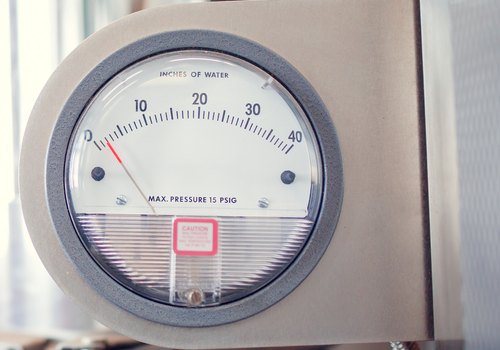
At the end of each camping day, you can attach a water flow meter to your filler hose and top off your RV’s water tank.
The meter will tell you how much water it takes to refill the tank and, therefore, how much you used that day.
You can track usage for several days to get an average amount of water you drain daily.
This technique is a bit of a hassle but is an accurate way to monitor daily water use so you can plan future trips accordingly.
INSTALL A WATER FLOW METER
For people who often boondock, taking the time to install a water flow meter permanently at the exit line of the water pump will be extremely helpful in controlling water use.
Note the reading at the start of each camping trip when you have a full water tank. Check the number of gallons used every day or so to keep water usage to an acceptable level to get you through your trip.
Can I Run My RV Water Pump While Connected to City Water?
There should be no reason to run your RV water pump while connected to city water.
Some RVers advise that when campground water pressure is low, they run their water pump to increase the pressure. But, depending on your RV’s water pump features, this may or may not work for you.
Whenever you leave your water pump on while connected to city water, you need to understand that the pump will pull water out of your holding tank. If you don’t pay attention to the water level inside the holding tank, it can run dry and burn up the pump motor.
The potential to get distracted and forget to turn off your pump isn’t worth the expensive repair coming your way.
Most city water connections have ample water pressure to force water through your RV’s plumbing system effectively.
In all my years on the road, I’ve never had to run my water pump while on city or campground water due to low pressure.
In fact, the water pressure can often be too high, and I always use a water pressure regulator on my hose connection to ensure I don’t damage my RV plumbing system.
Letting your RV water pump run while on city water will only shorten its lifespan, so turn it off whenever you connect to an outside tap.
Final Thoughts
We all take easy access to clean water for granted, but on an extended camping trip, using water from your RV water tank may test your level of comfort.
Keeping your RV’s water supply clean and fresh is the easiest way to avoid digestive issues, unpleasant odors, or bad taste while camping.
When you follow the tips above on how to keep your RV water fresh, you’ll be able to shower, wash dishes, cook, or even drink the water from your holding tank with confidence!
RV Fresh Water System: Tips and Tricks (Video)
"Man cannot discover new oceans unless he has the courage to lose sight of the shore."
-- Andre Gide

